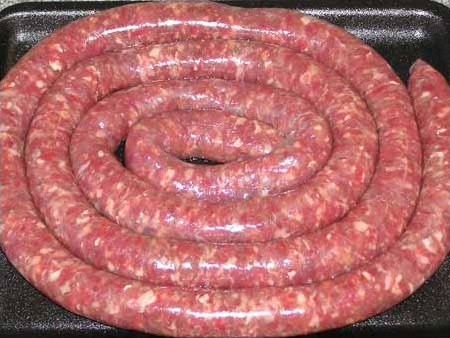Facts About Boerewors
Boerewors is a cherished type of sausage originating from Namibia and South Africa, firmly embedded in the culinary traditions of both nations. The name "boerewors" derives from the Afrikaans and Dutch words "boer" (farmer) and "worst" (sausage). To qualify as authentic boerewors, the sausage must contain a minimum of 90% meat, which can be beef, lamb, pork, or a combination of lamb and pork. The remaining 10% consists of spices and other ingredients. Importantly, it must not contain offal or mechanically recovered meat pulp, and the fat content must remain below 30%.
Traditionally, boerewors is made from coarsely minced beef, occasionally mixed with pork or lamb, and seasoned with a blend of spices such as coriander, black pepper, nutmeg, cloves, and allspice. It is known for its rich fat content and is preserved using salt and vinegar. Typically, boerewors is formed into a coil and is often served with pap, a traditional South African maize porridge.
This sausage enjoys popularity not only in Namibia and South Africa but also in countries like Botswana, Mozambique, and Zimbabwe, as well as among South and Southern African communities globally. It is usually grilled over charcoal for an authentic flavor, but can also be cooked under an electric grill, baked, or fried. It is crucial not to pierce the casing during cooking, as this can cause the sausage to dry out.
There are several variations of boerewors, including garlic wors, Karoowors, spekwors, and even vegan versions to accommodate the plant-based food trend. Another popular snack is droëwors, a dried or cured sausage reminiscent of biltong.
Boerewors is so treasured that there are competitions dedicated to its preparation and grilling, held at local, regional, and national levels. One notable competition is hosted annually by Shoprite, which seeks out the best new boerewors recipes. The winner earns the distinction of having their recipe produced and sold in Shoprite stores under the Championship Boerewors brand.

 Namibia
Namibia